
The Timeless Tradition of Engagement Rings
The history of the engagement ring is an enduring tradition, spanning centuries and cultures, symbolizing a commitment to marriage. This deeply-rooted custom, steeped in romance, legend, and a touch of myth, has evolved over time, shaping the cherished tradition of exchanging engagement rings.
The Market Value of Love
Considering that estimates put the global engagement ring market value at around $107 billion dollars a year (2017) worldwide, the engagement ring tradition is steadfast and strong. How did it all start?
Ancient Beginnings: Egypt’s Eternal Symbol
It is believed that the first people to wear wedding rings were the ancient Egyptians around 6,000 years ago. The circular shape of the ring symbolized eternity, or in this case, eternal love. The circle also represented the sun and moon, two fundamental symbols the Egyptians worshipped, and representing the eyes of the God Horus – the divine child of Osiris and Isis. Symbolism was important among the ancient Egyptians and something as important as declaring one’s eternal love and devotion would have merited an object with significant meaning.
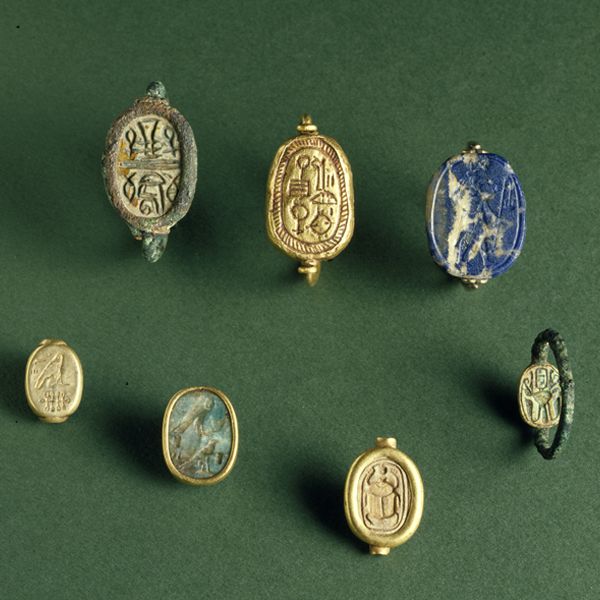
Photo Credit: The Walter Art Museum
Alexander’s Influence: The Devotion Ring
When Alexander the Great conquered Egypt in 332 BC, one of the traditions he brought back to Greece was the “devotion” ring, which was a spinoff of the Egyptian wedding ring, but primarily given to lovers as a sign of romantic devotion.
These rings, often crafted from precious metals and adorned with intricate symbols, became tokens of affection among the Hellenistic elite. The practice quickly took root in Greek society, as the notion of romantic love began to flourish alongside arranged marriages for political or economic reasons. The rings served as a constant, visible reminder of a bond that was chosen rather than imposed, a private pledge of fidelity and affection that could be as strong as any legal tie.
As the years passed, the tradition of the devotion ring evolved. Greek jewelers began to incorporate elements of their own culture, merging them with the Egyptian designs. They etched depictions of Eros, the Greek god of love, into bands, or adorned them with known symbols of love, such as ivy leaves, which were associated with Dionysus, the deity of passion and wine. These rings became increasingly popular, spreading the message that love, much like the gods, was an immortal force to be celebrated and honored.

Photo Credit: The Walter Art Museum
Roman Wedding Ring: The Betrothal Ring
It was the Romans who made it customary for a man to give his new wife a wedding ring (known as a betrothal ring at the time) on the day of the ceremony. The ring was worn by the woman on what is known today as the wedding ring finger (on the left hand, next to the pinky). The Romans believed the wedding ring finger held the “vena amoris” (vein of love), which was believed at the time to lead directly to the heart. While it is now known this vein does not, in fact, lead directly to the heart, nonetheless, it was a romantic and intriguing notion that popularized wearing the ring on that finger.
Gothic Rome: The Legal Binding of Marriage Rings
In 7th century Gothic Rome, giving or receiving a marriage ring during a wedding ceremony was considered a legal and binding commitment of marriage, even if nothing was put into writing.
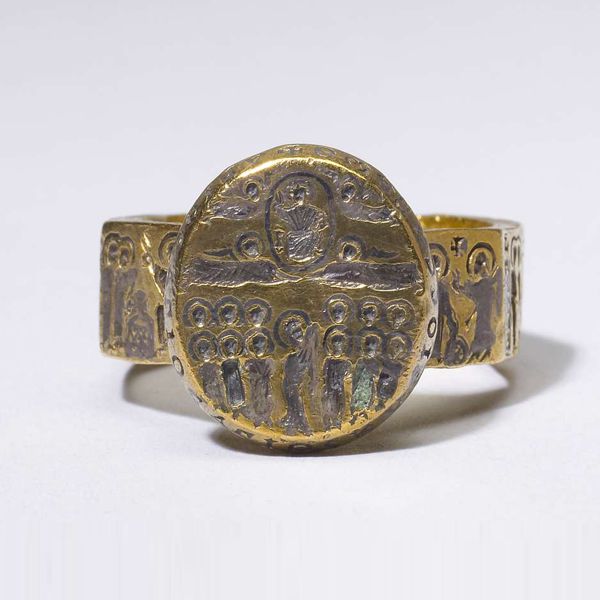
Photo Credit: The Walter Art Museum
The Church’s Role: Engagement Rings in the 9th Century
200 years later, in the 9th century, there is written documentation of Pope Nicholas corresponding to Boris I of Bulgaria that western churches were practicing the tradition of the man giving his bride an engagement ring, in advance of the wedding.
Public Declarations: The Mandate of Pope Innocent III
It wasn’t until the year 1215 Pope Innocent III declared elopements illegal and made it mandatory to publicly declare one’s intentions of marriage in advance and all weddings must be public affairs in order to be official in the eyes of the Catholic church. Some scholars believe this law started the tradition of bestowing an engagement ring and setting a future date for the wedding, which is still the tradition today among Western cultures, and more recently, Eastern cultures as well.
The First Diamond Engagement Ring
While diamond rings set with rough diamond were found in Rome as early as the late 100 CEs, the first confirmed, written record of someone giving a diamond ring as an engagement ring was in 1477 by Archduke Maximilian of Austria to Mary of Burgundy at the Imperial court of Vienna. Because of the Duke’s social status and fashionable style, many wealthy socialites wanted to emulate him and his new bride and thus created a trend of giving diamond rings to their wives and lovers.

Photo credit: The Walter Art Museum
The Victorian Era: Diamonds Become the Norm.
Even though the Duke’s gift was one for the record books, the diamond engagement ring was customary only among the nobility and aristocracy until the Victorian era (1837 to 1901), where queen Victoria’s love of diamonds would set off a broader trend that began in England and spread throughout Europe and the United States.
The trend initiated by Archduke Maximilian and popularized by Queen Victoria not only showcased societal status but also mirrored the evolving nature of marriage—from strategic alliances to unions of love. As diamonds became more accessible with the industrial revolution, the practice of gifting diamond rings spread beyond aristocracy, symbolizing eternal love and commitment.
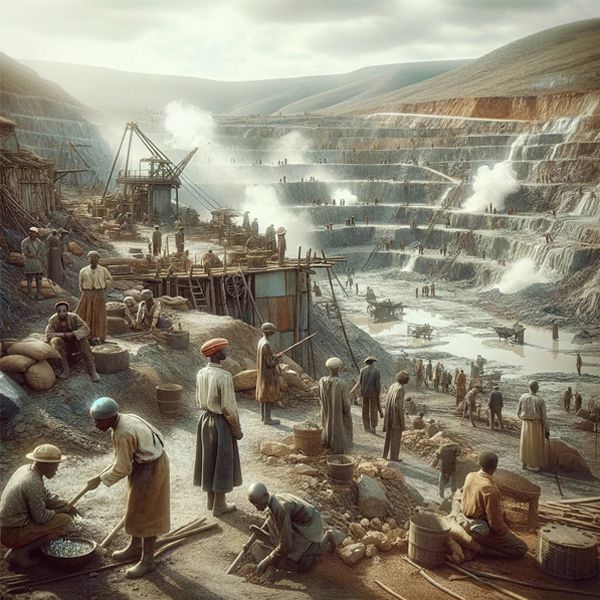
The Diamond Boom: South Africa’s Sparkling Contribution
Diamonds were discovered in South Africa in 1867 by the Debeers Consolidated Mines company. By 1872, the South African mines were producing one million carats per year. The diamond boom had arrived and wealthy women in Europe were wearing the expensive gemstone in droves. It was during this period that the diamond ring really got momentum as the ideal engagement ring for the elite classes that could afford them, especially while Queen Victoria began collecting diamonds and wearing them at press-filled social events.
Expanding Horizons: The Impact of African Mines
The discovery of diamonds in South Africa in 1867 not only initiated the diamond boom but also marked a significant transformation in the global diamond industry. The De Beers Consolidated Mines company, founded by Cecil Rhodes, quickly became synonymous with the diamond trade, establishing a monopoly that would influence the market for decades to come. This period also saw technological advancements in mining and cutting techniques, further increasing the allure and availability of diamonds.
Socio-Economic Ripple Effects: From Luxury to Controversy
The economic impact on South Africa was profound, as the diamond mining industry created thousands of jobs and contributed significantly to the country’s development.
However, this boom also raised ethical concerns regarding labor conditions and the exploitation of resources, aspects that continue to be addressed in modern discussions about diamond sourcing. This era set the stage for diamonds to become not just a symbol of wealth and status but also a cornerstone of economic and social change in the regions that produced them.

The American Market and De Beers’ Influence
Meanwhile, in the United States, the demand for diamond engagement rings declined after World War I with the onset of the Great Depression, and prices for diamonds began to plummet from oversupply. De Beers knew they had to do something or their investment in the diamond mines would be jeopardized. They launched a well-planned diamond engagement ring marketing campaign in 1939 and introduced their “a diamond is forever” slogan in 1947, suggesting (successfully) that a diamond ring was the only acceptable gemstone for an engagement ring. The campaign was so successful that between 1939 and 1979, sales of diamonds in the United States rose from $23 million to $2.1 billion per year, respectively.
Hollywood’s Role in Popularizing Diamond Rings
As De Beers’ sales grew, so did their advertising budget, and they did not pull any punches on spending. Hiring NW Ayer & Sons, the oldest advertising firms in America, De Beers was able to infiltrate Hollywood in a big way. Diamonds were placed in movies like “Gentlemen Prefer Blondes,” with Marilyn Monroe singing “diamonds are a girl’s best friend.” Diamond engagement rings were given to stars that were getting married, with the agreement they would be featured wearing them in fashion magazines, movie premiers, and social events. Articles in tabloids and society magazines were well planned to coincide with the photo opportunities, describing exactly what type of diamond jewelry was being worn at events.
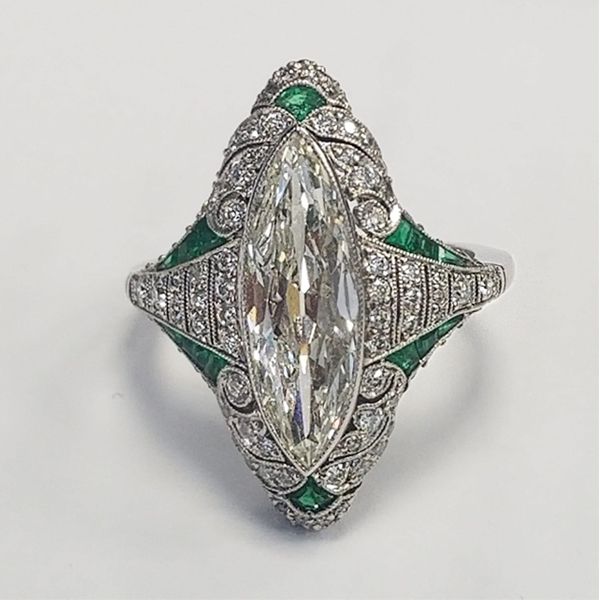
Legal Changes and Cultural Shifts
Some speculate that the abolishment of a law called the “breach of promise” also contributed to cementing the tradition of giving a diamond engagement ring in America. Before 1945, the law stated that a woman could sue if a man broke off an engagement, especially if they had slept together. The thinking was that a broken engagement often tarnished a woman’s reputation and made it more difficult to find a new suitor. Financial compensation could be attained. Once the law was abolished, the engagement ring was seen, to some regard, as a financial deposit, if you will, and would be kept by the woman if the marriage was called off.
Some speculate that the abolishment of a law known as the “breach of promise” played a role in solidifying the tradition of giving a diamond engagement ring in America. This law, effective until 1945, allowed a woman to seek legal recourse if a man terminated their engagement, particularly if they had been intimate.
The rationale behind this was that a broken engagement could significantly tarnish a woman’s reputation, complicating her chances of finding another suitor. It provided a means for financial compensation in such cases.
With the law’s repeal, the engagement ring began to be perceived, in some circles, as a form of financial security or deposit, which the woman would retain if the marriage proposal was withdrawn, symbolizing a tangible assurance of the man’s intentions. This shift marked a significant evolution in the cultural significance and perceived value of the engagement ring in American society.
The Modern Era of Engagement Rings
By the time the 1950s and ’60s rolled around, the engagement ring trend was here to stay. In the United States, women getting engaged with the costly diamond hand bauble went from 10% in 1939 to 80% in 1990. Tiffany & Co. had made the “Tiffany Setting” standard issue, and designers went to town to put their own flair on the traditional setting to make it unique. Japan followed suit, and now China (as of 2015) has 30% of their engaged or married population wearing one. If history repeats itself, the engagement ring tradition is going to be around for a long, long time.
Selling a Diamond Ring
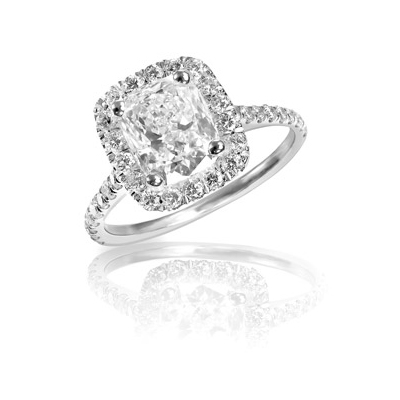
Are you considering selling an engagement ring? Just fill out the form below and a senior jewelry buyer will contact you with a verbal quote. If you are satisfied with the estimate, we’ll make an appointment for an in-personal appraisal of your diamond and immediate cash offer
Call: 310-499-4535
Text: 310-896-8623
GET A FREE QUOTEGet a Free Quote
Los Angeles Jewelry Buyer simplifies the process of selling a diamond ring in Los Angeles for several compelling reasons:
- Local Convenience: Avoid the hassle of shipping. Complete your sale directly and immediately with us.
- See Every Step of the Evaluation: We prioritize transparency, conducting all assessments in your presence, ensuring your ring is always within sight.
- Expertise You Can Trust: Our evaluator is GIA (Gemological Institute of America) trained and certified, assuring you of their expertise in the diamond industry.
- Guidance Without Pressure: If your diamond ring isn’t a fit for us, we’ll guide you to the best selling options and recommend other buyers. There’s no obligation to sell to us.
- Free Verbal Appraisals: We don’t charge for verbal appraisals. Our goal is to assist you in selling your diamond ring while gaining your trust and business.
Interested in learning more about why we’re your top choice for selling diamonds in Los Angeles? Click on this link to discover additional reasons that make us the premier destination for selling jewelry: The Best Place to Sell Jewelry.